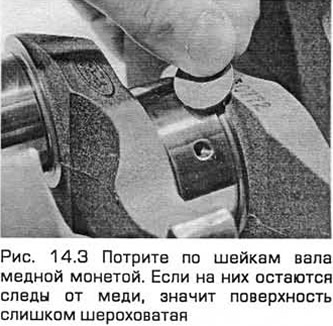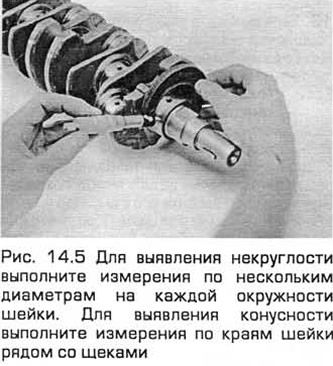Warning: Protect your eyes when working with compressed air. Clean the shaft oil passages with a pipe cleaner or similar.
2. Check the connecting rod and main journals through filters or the crankcase ventilation system. They can get into the oil and with it into the bearings. These can be metal filings from machining or normal wear products for uneven wear, nicks, cracks, or pitting.
3. Rub the shaft journals with a copper coin. If traces of copper remain on them, then the surface is too rough (see fig. 14.3).

4. Remove burrs from the oil passages with a file, scraper or emery wheel.
5. Measure the diameters of the main and connecting rod journals with a micrometer and compare the results (see Technical Requirements) (see fig. 14.5).

6. For out-of-roundness, measure several diameters on each neck circumference. To identify taper, measure along the edges of the neck next to the cheeks.
7. If the journals are damaged, tapered or out of round, or excessively worn (see Technical Requirements), then you need to transfer the shaft to specialists. They should return the reground shaft to you, along with oversize bearings.
8. Inspect the necks under the cuffs on both ends of the crankshaft for wear and damage. If there are deep grooves on these surfaces caused by the seal, contact a specialist. In this case, it is possible that the shaft can be repaired, otherwise it will have to be replaced.
Visitor comments